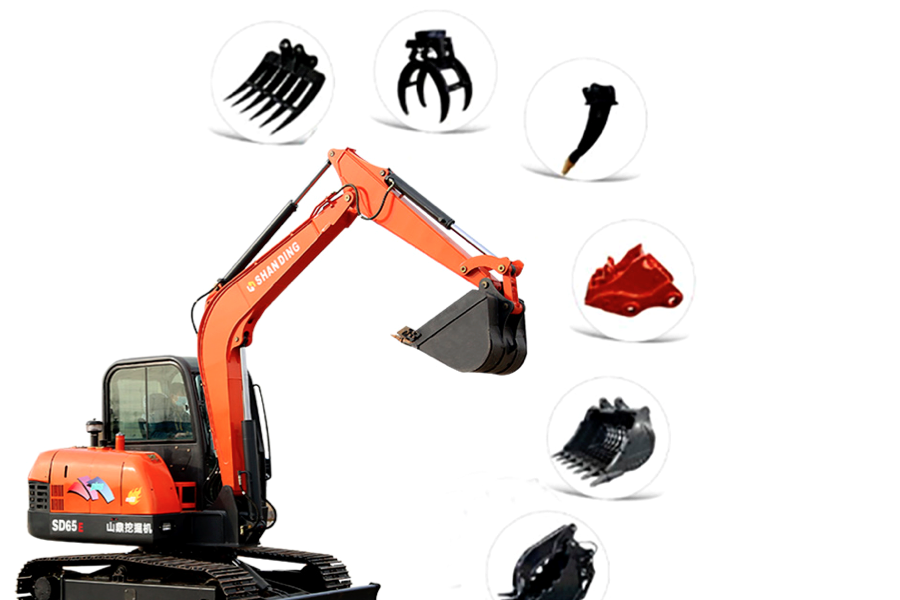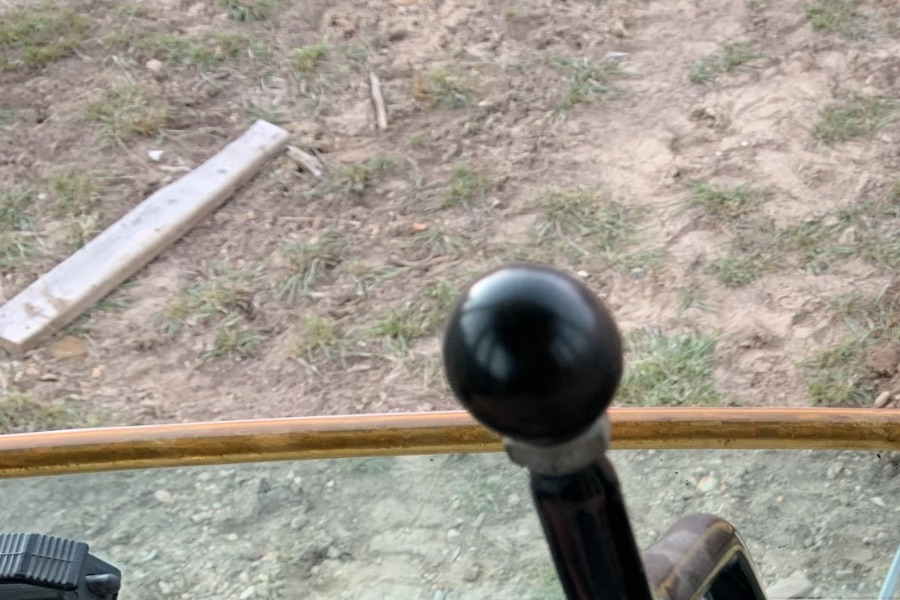Backhoes and excavators can take on similar jobs, but are quite different machines. Choosing one over the other requires consideration of the strengths and weaknesses of each, and how the machine will be used. This article looks at the different aspects of each machine to help the buyer to make the right choice.
Table of Contents
The projected backhoe and excavator market
The development of the backhoe and an excavator
Comparisons between a backhoe and excavator
Target market for different options
Final thoughts
The projected backhoe and excavator market
Backhoe loaders typically average around 8.5 metric tons, so they compete with mini excavators in the 5-10 ton range (sometimes referred to as midi excavators), rather than with larger excavators that range from 10 tons to over 50 tons.
The backhoe loader market is projected to be worth around USD 25.9 billion by 2030, and grow at a compound annual growth rate (CAGR) 7.1% from 2021 to 2030. By comparison, the mini excavator market is expected to grow at a CAGR of 4.4% to a market value of USD 10.2 billion by 2030, representing around 80% of the global excavator market (all sizes).
Buyers may be attracted by the popularity of mini excavators, but they would be wise to explore the benefits of backhoe loaders before deciding.
The development of the backhoe and excavator
Excavators evolved from the steam shovel, patented in 1839, and took the form we are now familiar with around 1946, with designs like the Bantam excavator, a rotating cab with a front boom, arm and shovel operated by cables.

By comparison, the loader evolved from the tractor, when Joseph Cyril Bamford added a front scoop to develop the Major Loader in the 1940s.
He then expanded his design by adding a movable boom, arm and shovel to the back (backhoe), and launched the first JCB backhoe loader in 1953.

Comparisons between a backhoe and excavator
Modern backhoes and excavators may appear similar, but up close they differ substantially. It is useful to compare their respective differences, advantages and disadvantages, to be able to make a considered choice.
Mobility
The excavator and backhoe loader move in different ways, and have different abilities in turning and rotating, so mobility is an important consideration for the job in hand.
Excavator advantages

- A mini excavator is fitted with rubber or metal tracks, although there are wheeled options. The tracked base has excellent grip over uneven and soft terrains
- The excavator body rotates 360 degrees on its base, and the cab and engine have a minimal overhang (tail swing)
- The low tail swing allows the excavator to access very tight locations, yet rotate and operate freely in all directions
Excavator disadvantages

- The tracked base is slow to move around on site surfaces and on roads. Change of position requires time and change of site requires additional transport
- The tracks can damage road surfaces, even with rubber tracks
- The excavator’s low tail-swing risks tip-over problems with heavy loads
Backhoe advantages

- A backhoe loader will come with either 2 or 4-wheel drive, although there are a few tracked versions (called a trackhoe)
- Large treaded tires give the backhoe great maneuverability on roads and around job sites, with speeds of around 25 mph
- Four wheel drive adds to maneuverability on uneven surfaces
- The backhoe can easily reverse and turn on normal road surfaces
- Extendable support arms provide a firm platform for unsteady work
- The rear boom can rotate up to 200 degrees for side-to-side operation
Backhoe disadvantages
- The backhoe cannot rotate on its base so must drive forwards and backwards, or steer, to adjust position
- The length of the backhoe with its front bucket and rear boom means the machine is limited to operating movements backwards and forwards and sideways operation is limited to 200 degrees for the rear boom
Adaptability and suitability
The ability for the machine to adapt to different circumstances, to vary its role from one type of job to another, is a key consideration. Backhoes and excavators can take on many tasks, but each excel in certain environments.
Excavator advantages

- Mini excavators are suitable for a wide range of applications, including construction, farming, landscaping, residential and general utilities
- The powerful boom arm and bucket are excellent for digging trenches, ditches, foundations and post holes, for leveling and compacting
- The bucket can be easily changed to a variety of tools that adapt the excavator to many roles such as drilling, ground breaking, mowing, tree grabbing, soil tilling, demolishing and undergrowth clearing
- The excavator can also be used for general utility work such as debris removal, lifting and moving of heavy materials
Excavator disadvantages
- The mini excavator is slow when moving between locations to shift from one role to another, and especially when covering larger distance such as across a farm from field to field
Backhoe advantages

- The backhoe rear boom can handle many of the same applications as an excavator and the arm can be fitted with most of the same tools
- One advantage that the backhoe has is the large front bucket, which is ideal for heavy earthworks, moving large amounts of material, digging wide trenches, and for leveling and compacting
- The front bucket can also be replaced with other tools adding versatility to the loader. For example it can be fitted with forklifts for fast loading and unloading
- The addition of the rear boom means that the backhoe can dig and move earth using the front bucket and backfill with the rear boom. It can also take on other roles where it can switch quickly from one task at the front to another at the back
Backhoe disadvantages
- Because the backhoe is wheeled, it can have traction issues on slopes or deep mud. This limits its versatility as it is best suited for even surfaces
Controls and ease of use

Controls for both backhoes and excavators are evolving, and backhoes have even adopted some of the excavator joystick controls. Ease of use is important for a tiring long work day.
Excavator advantages
- The operator’s cab rotates with the boom so the operator always has a direct view of the boom for movement control
- Excavator boom and arm controls are easy to use joysticks. The functions are the same for all types of excavator, so an experienced operator can adapt to different machines quickly
- Excavator movement is controlled by foot pedals to power the tracks forward and backward, so that the operator’s hands are free to use the joysticks
Excavator disadvantages
- Excavator controls require a little practice to learn initially, and are a bit more precise compared to the controls of a backhoe
Backhoe advantages

- The operator’s seat rotates 360 degrees so that the operator can face the front or the rear operation
- Modern cab and seat designs such as JCB have ergonomic excavator-like controls that rotate as the seat rotates
- Backhoe operation offers both a ‘pilot’ control using buttons, or lever control using two side arm levers
- Older models of backhoes use lever controls, and operators familiar with this style may prefer to use the new lever controls instead of push button operation
- Pilot button operation is more comfortable and less tiring to operate than levers, and operators can switch from one function to the other easily
Backhoe disadvantages

- Although most operating controls are mounted on the seat, there are still some functions that will only be on the front steering wheel console, so not accessible when the seat is rotated
- Older backhoes have separate sets of levers for front and back operation and the operator must rotate between both
Power and dig depth
The power that a machine can generate to the bucket, and the bucket size, are important considerations. They determine how well the bucket can pull through a dig, especially when the boom is extended for a deeper dig. Excavators and backhoes actually have similar power, in the 60-120hp range, and digging capabilities with similar sized booms.
Excavator advantages
- Excavators in the 5-10 ton range can typically dig to depths of between 4-7.5m
- A standard 9 ton excavator with a 3.5m boom can dig to around 7.3m
Backhoe advantages
- Backhoe loader dig depths range from around 3m for smaller machines up to round 6m for larger machines.
- The JCB 4CX-15 SUPER Backhoe is the largest machine in the JCB range with 109hp and a dig depth of 6.12m
Price comparisons
Prices vary by brand and quality, and a wide range of prices can be found for both machine types. Weight comparison is not a clear factor due to the different weights of fittings and undercarriage. Major brands include JCB, CAT, Volvo, Deere & Co, Hitachi, Komatsu, Yanmar, Doosan, Liugong. These can be found in new and used condition at a variety of prices at alibaba.com.
| Backhoe Loader | Excavator | |||
| 6 ton | China HW20 | USD 14,580+ | China XE60DA | USD 18,600+ |
| 7 ton | China 4CX | USD 25,000+ | Yanmar | USD 10,000+ |
| 8 ton | China Kattier | USD 30,000+ | Grid Electric | USD 69,600+ |
| 9 ton | JCB (used) | USD 7,800+ | China SY80U | USD 26,000+ |
| 10 ton | China TDER | USD 24,000+ | SANY (used) | USD 11,000+ |
Final thoughts
Excavators and Backhoes are very similar in many ways. They can do most of the same jobs, and are of similar size and power. They differ in the way in which their fittings can be used. Excavators are ponderous machines, whereas the backhoe is nimble and agile. However, 5-10 ton excavators are very suitable for small spaces, working from their solid crawler platform, whereas backhoes need room to maneuver.
Mini excavators are well suited for heavy-duty construction projects and demolition work, breaking concrete and drilling foundation holes. They are best at lifting and moving objects when required to swing a load from one place to another, or over a short distance. With added tools, they can adapt to mowing and tilling, post and tree grabbing, and undergrowth clearing
The backhoe’s strengths are in earthworks projects and, because of its relative speed, projects that cover any distance. Backhoe loaders are often preferred for farms, residential digging and for utility roles. The front loader is fast at scooping earth, plowing snow, lifting hay bales and feed bags. The backhoe is also commonly used on road trenching and digging projects. The wheeled undercarriage means it can move across fields and roads quickly and easily, from one part of the job to another.
For the prospective user, it is wise to consider the job at hand, and the additional tasks and roles that the machine may be called upon to carry out. If in doubt, talk to the supplier for their recommendations.




